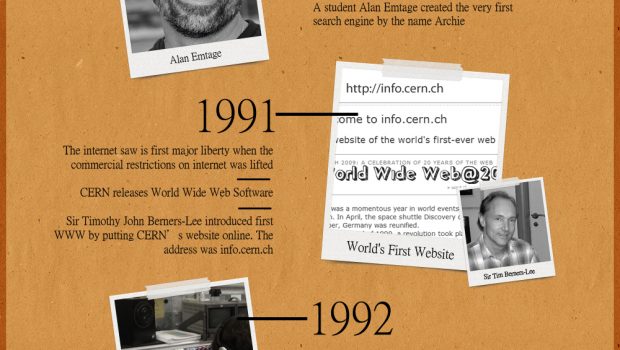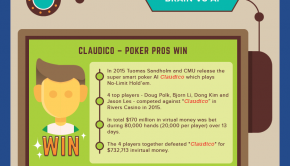The revolution called World Wide Web [Infographic]
When the Oxford University Graduate Tim Berners-Lee joined CERN as software engineer he quickly noticed the gap in information sharing between the scientists working at CERN. In short, the scientists needed to log on to different computers in order to access the information stored on them. It affected the productivity of scientists. In order to respond to this limitation Tim thought of using hypertext to share the information. With this in mind he shared his project documents in 1989.
The Foundation
It was Tim’s Boss- Mike Sendall- who sort of encouraged Tim by noting that although Vague- the project was exciting. He also gave Tim at some time to work on it, eve though the web was never an official project of CERN. Finally in October 1990 the “Vague” project of Tim got its foundational stones- the3 technologies on which the major structure of WWW is built today:
- HTML or Hypertext Mark-up Language: Employed as formatting language for the web. 199
- URI or Uniform Resource Identifier: It is a specific string of characters that is employed for identifying and facilitating the interaction with a resource over the network. In this context it was the World Wide Web. The functioning of URI is based on specific protocols.
- HTTP or HyperText Transfer Protocol: It is employed to retrieve the linked resource from different parts of the web.
- First browser/editor for web page: WorldWideWeb (Later named Nexus) the first browser editor was written by Tim Lee on his Next computer using (then) advanced tools using application builder and WYSWYG word processor that speed up the process.
- First web server: Tim Berner employed a NeXT computer to act as the web server- the first of its kind in the world
Hence, we see that the entire infrastructure was now ready. By the end of the year Tim was able to serve the first web page on the open internet. A little later, in 1991 people outside CERN got invitation to be a par offer new community called Web!
Spreading the World Wide Web
However, there was still a major caveat that could not escape the eyes of Tim. The people still needed permission to use the net. In other words, it was still a proprietary. So, Tim along with other influential figures convinced Cern to release the basic code of WWW in the public and made it freely available to them. Cern finally agreed and announced the same in April 1993. That was the real milestone in the history of World Wide Web- something that allowed the people to share the information, insights and ideas- without any restriction.
Infographic credits: Everdata Dedicated Servers
















